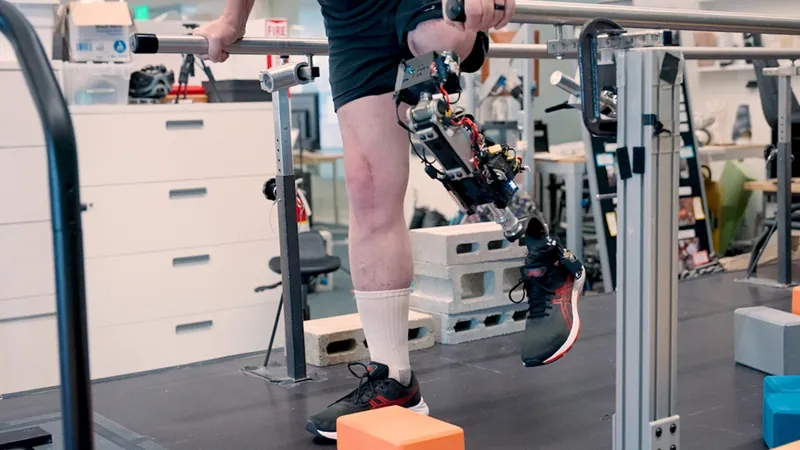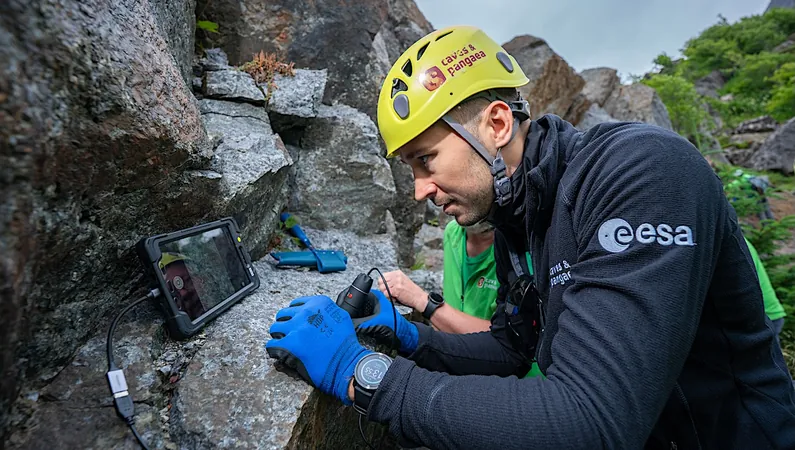
Revolutionary Bionic Knee: The Future of Prosthetics That Feels Like Part of You!
2025-07-17
Author: Mei
A Groundbreaking Innovation in Prosthetics
Imagine walking or climbing stairs with ease after an above-the-knee amputation! Thanks to a newly developed bionic knee, this dream is now a reality. Unveiled on July 10 in the journal Science, this cutting-edge prosthetic is designed to transform the lives of amputees.
More Than Just a Device
This innovative prosthesis connects to the femur through a titanium rod and features electrodes that are permanently implanted in the leg muscles. Researchers report that this remarkable design not only enhances mobility but also fosters a greater sense of ownership and control over the limb.
"This prosthesis is tissue-integrated; it’s anchored to the bone and directly controlled by the nervous system," says Hugh Herr, co-author of the study and a double amputee himself. He emphasizes that it’s not merely a tool, but an integral extension of one’s own body.
How It Works: A Revolutionary Surgical Technique
Unlike traditional prosthetics that attach through a socket, this new bionic knee interacts directly with the muscles and bones. This groundbreaking approach allows surgeons to reconnect pairs of muscles that move in opposition, like the hamstring and quadriceps, preserving their natural communication. Traditional methods often neglect this crucial step, making it harder for users to manage their prosthetics.
Enhanced Stability and Performance
The study also introduces a novel technique to integrate the bionic system into the residual femur, enhancing stability and load-bearing capacity compared to conventional prosthetics. "By loading the skeleton directly, we reduce discomfort and the risk of skin infections associated with socket designs," explains Tony Shu, a biomechatronics researcher.
Real Results: Participants Shine in Performance Tests
In the study, participants who underwent both the muscle-connecting procedure and the new bone-integrated implant excelled in various tasks, outperforming peers with only muscle surgery and those with traditional prosthetics. They demonstrated superior abilities in climbing stairs, overcoming obstacles, and flexing the bionic knee.
Feeling Like Yourself Again
The participants who received both procedures reported remarkable increases in their sense of ownership and agency over the prosthetic limb. Herr points out that no matter how advanced robotic prosthetics may become, they often still feel like external tools. However, this integrated approach blurs those lines, making users feel that the prosthesis is genuinely part of themselves.
What’s Next: A Bright Future for Amputees
Although this revolutionary bionic knee is not yet available for commercial purchase, clinical trials for FDA approval are on the horizon and could take around five years. The future looks bright for those seeking a more natural and intuitive prosthetic experience!

 Brasil (PT)
Brasil (PT)
 Canada (EN)
Canada (EN)
 Chile (ES)
Chile (ES)
 Česko (CS)
Česko (CS)
 대한민국 (KO)
대한민국 (KO)
 España (ES)
España (ES)
 France (FR)
France (FR)
 Hong Kong (EN)
Hong Kong (EN)
 Italia (IT)
Italia (IT)
 日本 (JA)
日本 (JA)
 Magyarország (HU)
Magyarország (HU)
 Norge (NO)
Norge (NO)
 Polska (PL)
Polska (PL)
 Schweiz (DE)
Schweiz (DE)
 Singapore (EN)
Singapore (EN)
 Sverige (SV)
Sverige (SV)
 Suomi (FI)
Suomi (FI)
 Türkiye (TR)
Türkiye (TR)
 الإمارات العربية المتحدة (AR)
الإمارات العربية المتحدة (AR)